Cardigan, Cardiganshire
Up to 1834
In 1785, the Cardigan St Mary Vestry drew up a plan for a workhouse for its poor, together with a set of rules. In 1803, the parish relieved seven paupers in a workhouse.
After 1834
Cardigan Poor Law Union was formed on 9th May, 1837. Its operation was overseen by an elected Board of Guardians, 33 in number, representing its 26 constituent parishes as listed below (figures in brackets indicate numbers of Guardians if more than one):
Cardiganshire:
Aberporth, Blaenporth, Llandygwyd (2), Llangoedmore (2), Llechryd, Mount, St. Mary's in the Borough of Cardigan (3), Tremaine, Verwick.
Pembrokeshire:
Bayvil, Bridell, Cilgerran, Dinas, Eglwyscrw, Llanfair Nant gwyn, Llanfihangel Penbedw, Llantwyd, Llanychlwydog, Maenordewi, Melinau, Molygrove or Trewyddel, Monnington or Eglwys Wythiel, Nevern (2), Newport (2), St. Dogmels (2), Whitchurch or Eglwyswen.
The population falling within the union at the 1831 census had been 18,990 with parishes ranging in size from Monnington, or Eglwys Wythiel (population 102) to St. Mary's, Cardigan itself (2,795). The average annual poor-rate expenditure for the period 1834-36 had been £5,368.
In 1839, the Poor Law Commissioners authorised an expenditure of £3,286 on the erection of a new union workhouse. The Cardigan workhouse was built in 1839-40 on an elevated site to the west of Cardigan to the north of St Dogmaels. Its location and layout are shown on the 1888 map below.
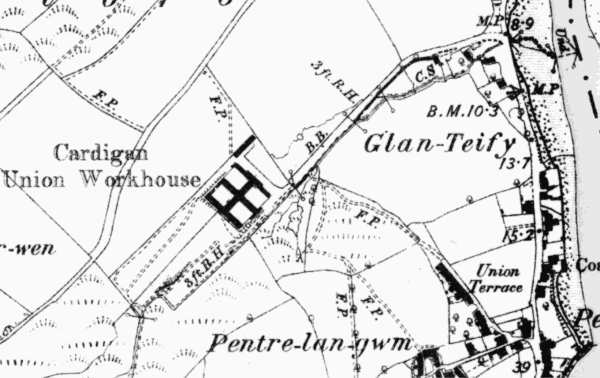
Cardigan Workhouse site, 1888.
The building, intended to accommodate 120 inmates, was designed by William Owen of Haverfordwest. The workhouse layout followed the popular cruciform or "square" design, with its entrance block facing north-east. There were separate entrance doors for males and females.
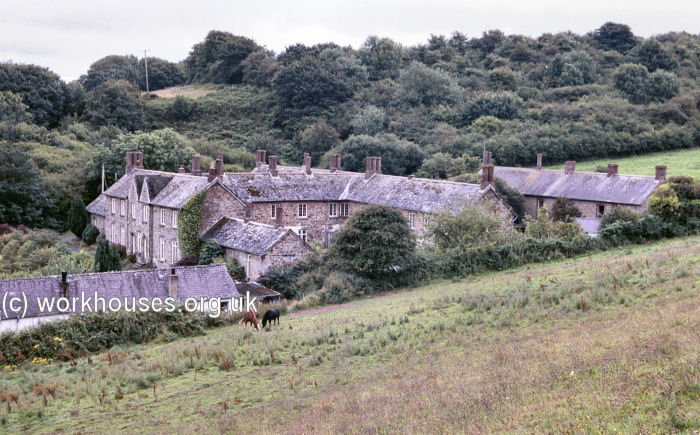
Cardigan, general view from the north, 2000.
© Peter Higginbotham.
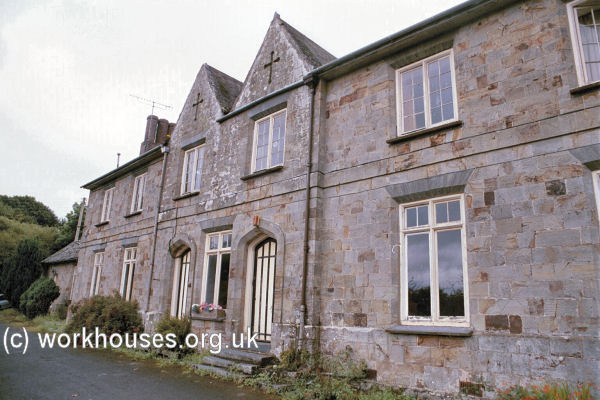
Cardigan entrance block from the north, 2000.
© Peter Higginbotham.
Behind the entrance block, four accommodation wings (north-east, south-east, south-west, north-west) emanated from a central hub.
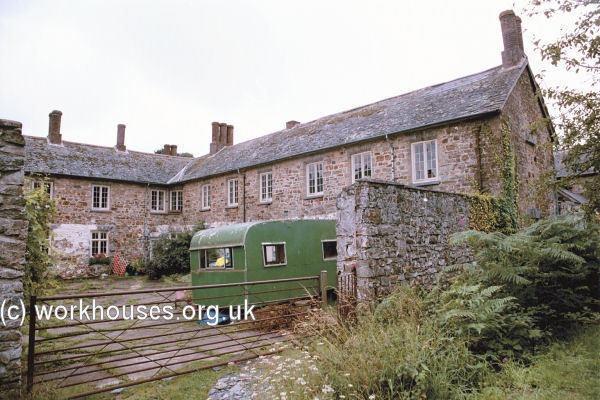
Cardigan, southern yard from the south, 2000.
© Peter Higginbotham.
A separate vagrants' block was erected in 1884 at the south of the workhouse.
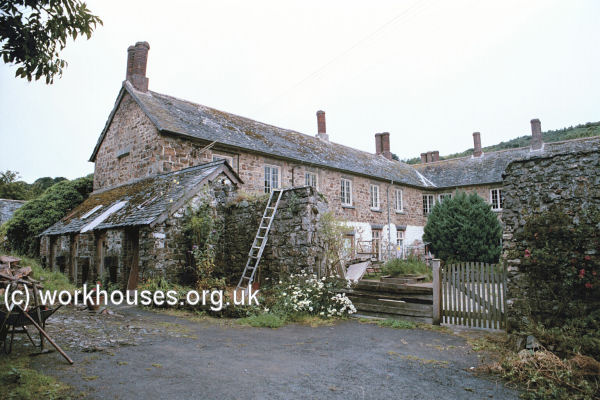
Cardigan south-east wing and vagrants' block from the east, 2000.
© Peter Higginbotham.
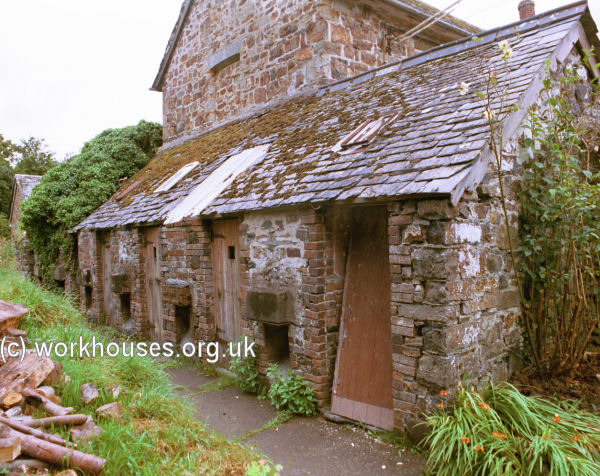
Cardigan, vagrant's block from the east, 2000.
© Peter Higginbotham.
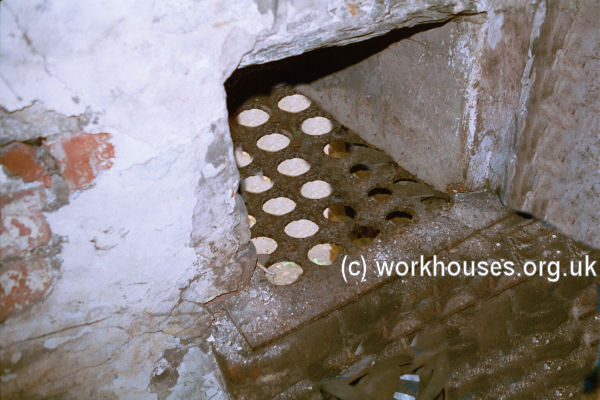
Cardigan, vagrant's block interior.
© Peter Higginbotham.
After 1904, for birth registration purposes, the address of the workhouse was recorded as 'Albro Castle'.
In 1930, the workhouse was redesignated as a Public Assistance Institution for the accommodation of the elderly and chronic sick, and vagrants.
The buildings are now used as private residential/holiday accommodation.
Staff
Inmates
Records
Note: many repositories impose a closure period of up to 100 years for records identifying individuals. Before travelling a long distance, always check that the records you want to consult will be available.
- Ceredigion Archives, Old Town Hall, Queen's Square, Aberystwyth, Ceredigion SY23 2EB. Records include: Guardians' minute books (1837-84); Financial records (1842-89); Admissions and discharges (1856-1935); Births (1901-35); Deaths (1901-35); etc.
Bibliography
- Higginbotham, Peter The Workhouse Encyclopedia (2014, The History Press)
- NEW! Workhouses of Wales and the Welsh Borders. The story of the workhouse across the whole of Wales and the border counties of Cheshire, Gloucestershire, Herefordshire and Shropshire. More...
Links
- None.
Unless otherwise indicated, this page () is copyright Peter Higginbotham. Contents may not be reproduced without permission.


